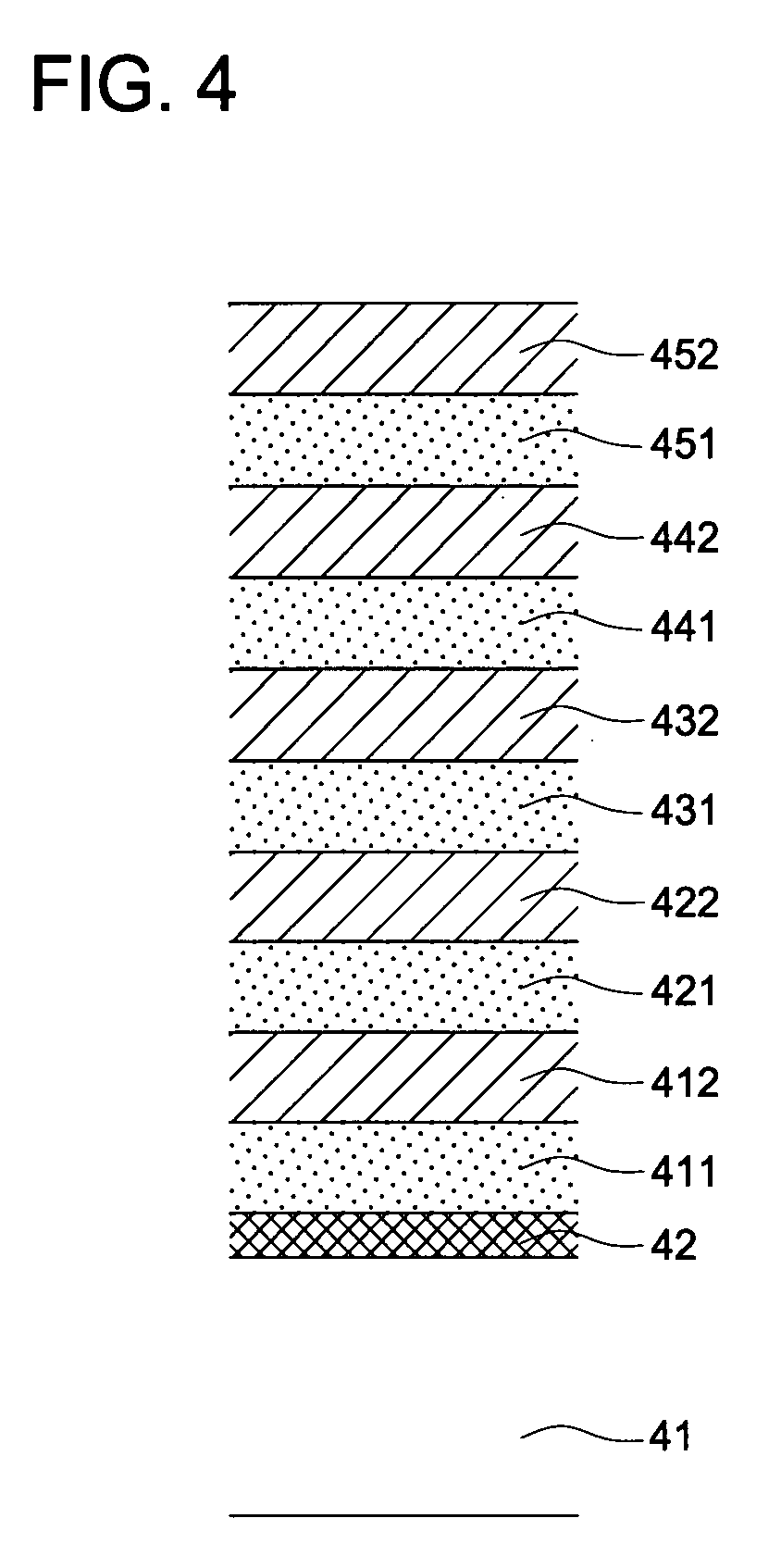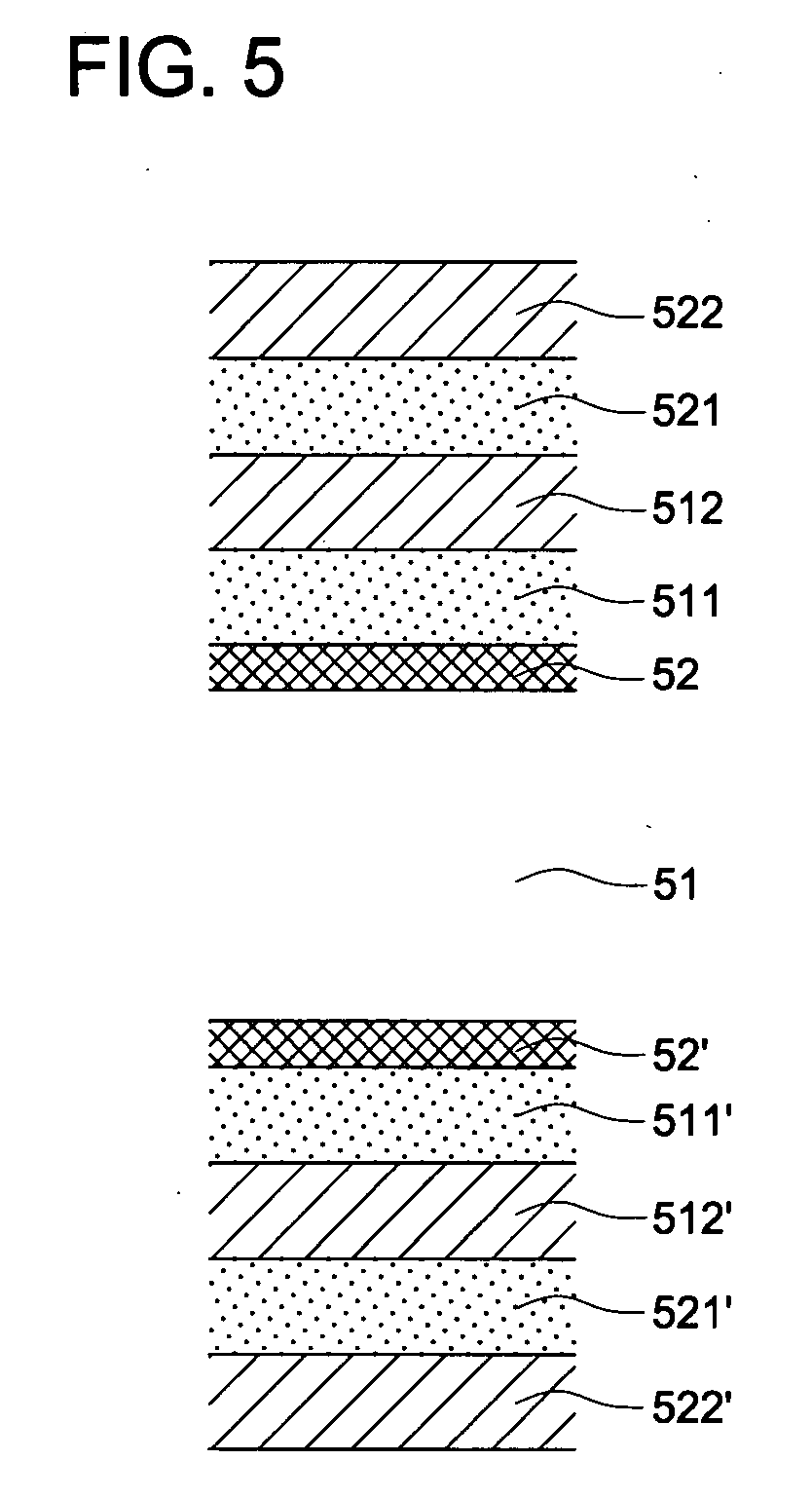Transparent barrier sheet and preparation method thereof
- Summary
- Abstract
- Description
- Claims
- Application Information
AI Technical Summary
Benefits of technology
Problems solved by technology
Method used
Image
Examples
example 1
[0075]A 100 μm thick polyether sulfone film (Sumilight FS-530, produced by Sumitomo Bakelight Co., Ltd.) was prepared as a substrate sheet. One side of the sheet was subjected to a corona discharge treatment and further thereon, a coating composition composed of 98 parts of methyl ether and 2 parts of diphenyl-4-thiophenoxysulfonium hexafluoroantimonate as an initiator was coated at a coating thickness of 0.5 μm. Then, using an ultraviolet exposure apparatus (a conveyor-fitted UV curing apparatus, produced by Iwasaki Denki) the coated surface was exposed to ultraviolet rays in an atmosphere at a sufficient dose to react the composition and cured to form a transparent primer layer. The surface of the transparent primer layer was measured at five sites within an area 200 μm×200 μm by using a noncontact 3D surface measuring apparatus (WYKO NT1100, produced by Veeco). Surface roughness (Ra) was analyzed using a self-contained surface analysis software. Average surface roughness Ra was d...
example 2
[0084]A substrate sheet provided with transparent primer layers on both sides was prepared. On both sides of a 125 μm thick biaxially stretched polyethylene terephthalate film (Cosmoshine A-4300, produced by Toyobo) was coated with the same coating composition as used in Example 1 and exposed to ultraviolet rays to be cured to form a 0.3 μm thick transparent primer layer. The surface of the transparent primer layer was measured at five sites by using a noncontact 3D surface measuring apparatus (WYKO NT1100, produced by Veeco) and the average surface roughness (Ra) was 3.5 nm.
[0085]Then, transparent barrier sheets of the invention, 2-A through 2-E were prepared in the manners 1) and 2) described below. The thus prepared transparent barrier sheets were evaluated with respect to barrier capability and bending resistance similarly to Example 1. Results obtained are shown in Table 2.
1) Formation of Inorganic Layer:
[0086]Using a film deposition apparatus according to the process of cataly...
example 3
[0090]One side of a 100 μm thick biaxially stretched polyethylene terephthalate film (Teonex Q65, produced by Teijin) was subjected to a corona discharge treatment to prepare a substrate sheet. The substrate sheet was placed into a vacuum vessel and the inside of the vessel was evacuated to a level of 10−4 Pa, and 1,4-butanediol glycidyl ether and 1,3-diaminopropane (produced by Tokyo Kasei) were each introduced as separate deposition sources and flash heating was started. After completing evaporation of impurities, a deposition shutter was opened to allow deposition and polymerization on the substrate sheet to form a transparent primer layer C. The surface of the transparent primer layer was measured at five sites by using a noncontact 3D surface measurement apparatus (WYKO NT1100, produced by Veeco) and the surface roughness (Ra) was 2.0 nm.
[0091]Subsequently, a transparent inorganic layer A, as described in 3) below and a transparent organic layer B, as described in 4) below were...
PUM
| Property | Measurement | Unit |
|---|---|---|
| Temperature | aaaaa | aaaaa |
| Temperature | aaaaa | aaaaa |
| Thickness | aaaaa | aaaaa |
Abstract
Description
Claims
Application Information
 Login to View More
Login to View More - R&D
- Intellectual Property
- Life Sciences
- Materials
- Tech Scout
- Unparalleled Data Quality
- Higher Quality Content
- 60% Fewer Hallucinations
Browse by: Latest US Patents, China's latest patents, Technical Efficacy Thesaurus, Application Domain, Technology Topic, Popular Technical Reports.
© 2025 PatSnap. All rights reserved.Legal|Privacy policy|Modern Slavery Act Transparency Statement|Sitemap|About US| Contact US: help@patsnap.com



